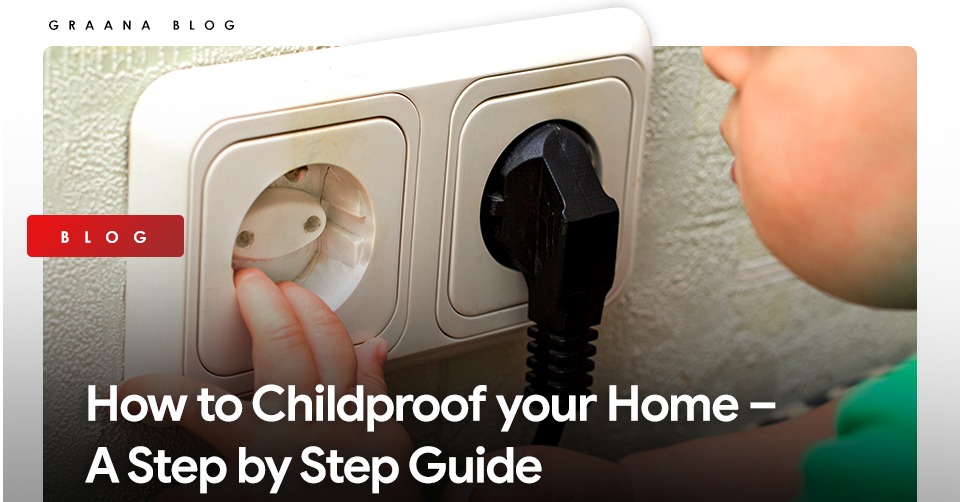It may seem daunting to childproof your home, but just a few simple steps can make it safer. It is imperative to make sure that your children cannot get out of your home or get into rooms before you begin childproofing it.
A list of what needs to be done in the home to ensure a safe environment when welcoming a new baby may be daunting to expectant parents. Parents can get turned around by seemingly endless lists of must-haves
by adding a baby-proofing product search to the mix.
If you think you have done everything right with childproofing, there’s still a chance something’s been missed.
Babyproofing your home can make a big difference in keeping your child safe. As a starting point, examine all electrical outlets, windows, and detectors. You should pay particular attention to your child’s bedroom or nursery, as well as the kitchen and bathroom.
The article will help you prevent unnecessary injuries and accidents by showing you how to childproof your home.
Know your high-risk zones
Identifying potential sources of injury is the responsibility of parents and guardians. Research has shown that most incidents occur when:
- Bathrooms, kitchens, swimming pools, hot tubs
- The flame or heat of a kitchen stove, fireplace, or barbecue grill
- Under the kitchen sink, in a medicine cabinet, in the garage or shed, in a purse, or in any place where medications are kept are all potential toxic sources.
- There is a possibility of a fall on stairs, slippery floors, high windows, or tipping furniture.
Basic Tips for Around the Home
Detect potential dangers in your furniture, stairs, and household items, and install protective measures. Examples include:
- Anchors to prevent appliances and furniture from falling over, including ovens and TVs.
- There are bumpers for corners and edges of sharp objects, such as coffee tables and fireplaces.
- Children’s safety gates protect them from accidents such as falling down stairs or entering rooms with potential hazards.
- Keep children from entering rooms with potential danger by covering doorknobs and locking doors, and let adults open the doors quickly in case of an emergency.
- Water heaters should be set to 120 degrees Fahrenheit and faucets should be fitted with anti-scald devices.
- There are cordless window coverings to help prevent strangulation. The inner cords of the blinds to raise them are safer without dangling pull cords, which can be a safety hazard.
Stairwell looks like the most intriguing challenge
To a child who is exploring, stairs seem like an interesting challenge. But each day, many children visit the emergency room after they’ve fallen. You can avoid costly hospital bills and injuries by taking some precautions around your staircase.
- The easiest way for making childproof home is to avoid accessing a stairwell for your child.
- Make sure your baby won’t try to climb up or downstairs by getting a baby gate on both sides of the stairs.
- Installing a baby gate without drilling is possible if you live in a rental and cannot make drill marks in the wall without upsetting your landlord. Zip ties can be used instead of drilling.
- Make sure your stairs are equipped with a handrail that your child can use and teach him or her how to safely navigate the stairs, even if that means sliding down one at a time until they have grown old enough to use a handrail.
- Consider installing carpeting on the stairs: Carpeting on the stairs and at the bottom of the stairs can make an enormous difference if your child falls.
- To prevent falls, you’ll want to wipe up spills if you don’t have carpeting. Sippy cups spilled on the steps should be wiped up as soon as possible.
- Lighten up: Stairways, especially those leading to the basement, are often gloomy. For your child to climb or descend the stairs safely, you’ll want good light.
Babyproofing Bathroom
There should always be a cover on the tub faucet. Your toddler can be protected from bumps and bruises with spout covers. As another precaution, set your water heater to 120 degrees Fahrenheit so that your child won’t burn himself. You can install an anti-scald device on your faucet if you live in an apartment building and cannot adjust yours. Water flows are stopped by sensors when the temperature exceeds a safe level.
There is no liner in the wastebasket. When you line the bathroom trash with a plastic grocery bag, it may be easier to empty, but the convenience isn’t worth the risk. The toddler could suffocate by putting the bag over her head.
There is no way to close the door. Among kids, fingers and thumbs are the most commonly amputated parts. A towel can be draped over the top of a door to prevent it from closing all the way. This step is one of the important step in order to childproof your home.
Fireplace Gate
Fireplaces are common in many homes, and while it can be cozy to have a fire going on a cold night, it is a good idea to protect your children from the flames.
When you’re lighting a fire, a fireplace gate is a great way to keep your kids from getting too close to the flames.
Do not leave your children unattended when your fireplace is burning. Keep your fireplace and chimney clean and inspected regularly.
Stove Guard
Kids can be seriously burned on your stove by food cooked there or by turning on the burners when they aren’t paying attention.
Using the back burners and adjusting the handles to avoid facing forward can help prevent burns. A stove guard is another way to make your stove safer.
Plastic guards work similarly to stove guards to protect your children from electronics in your homes, such as your TV, VCR, or DVD player.
BabyProof Car
You shouldn’t just stop at your front door when it comes to baby-proofing—the same goes for your car. The baby’s first contact with the world is in the vehicle on his way home from the hospital, so it’s crucial to review the basics of car seat safety. As you begin to babyproof your car, keep these tips in mind.
The back seat of your vehicle should have an approved rear-facing car seat installed (preferably in the middle). Get it checked by a child passenger safety technician.
If you live in an area where the sun is especially harsh, consider using stick-on sun shades to block its rays (avoid sun shades that hang or are held in place with suction cups that could fall or come off).
If possible, remove coins and pens from the car that could pose choking hazards to children.
BabyProof the Nursery
Baby wipes and supplies should be kept on the changing table where you can access them, but the child cannot.
Make sure that the changing table is covered with a thick carpet or rug.
The crib should be positioned away from windows, heaters, lamps, wall decorations, and cords.
To prevent exposure to toxic fumes prior to the baby’s arrival, complete all painting and wallpapering eight weeks ahead of time.
Ensure that the crib’s slats are not more than two and three-eighths of an inch apart and that all screws and bolts are tight. Ensure that the mattress does not protrude from the crib.
Bedding, comforters, pillows, blankets, and toys should not be placed inside the crib.
Conclusion
Despite our best efforts, it isn’t possible to keep our children safe from all harm with bubble wrap. However, it is possible to prevent an awful lot of injuries and accidents with little planning, child locks, and common sense.




